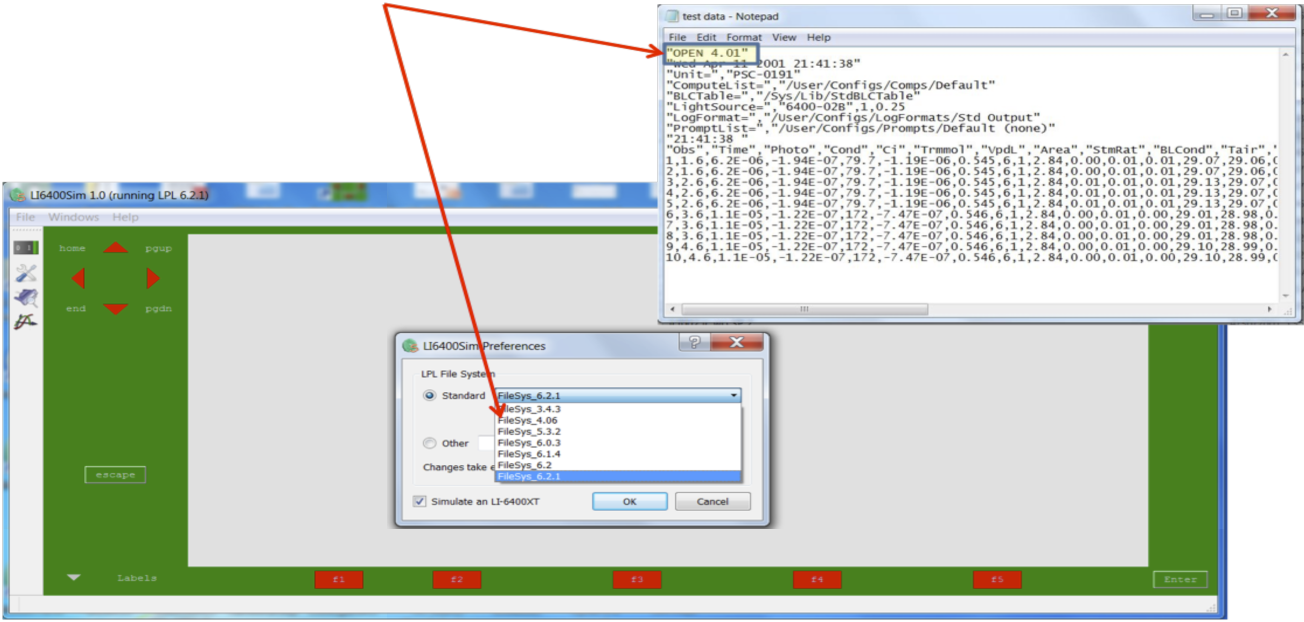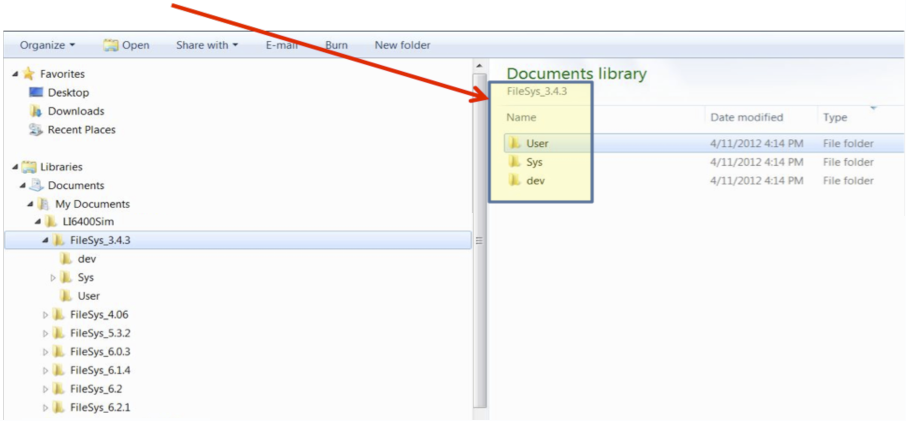Recomputing LI-6400/XT data sets generated with older software versions
This Tech Tip describes different approaches that can be followed to recompute LI-6400/XT data generated with older versions of OPEN software.
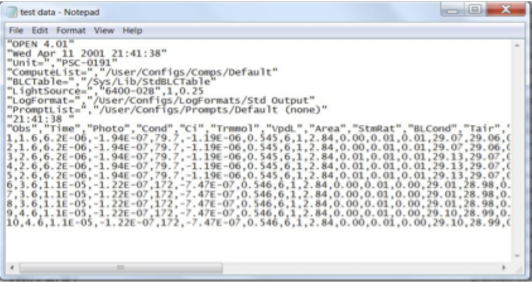
First, in order to RECOMPUTE data you must have the essential variables logged in your data file. Though possible, it is rarely a good idea to remove essential variables from your log list. You should proceed carefully when you receive software warnings concerning essential variables.
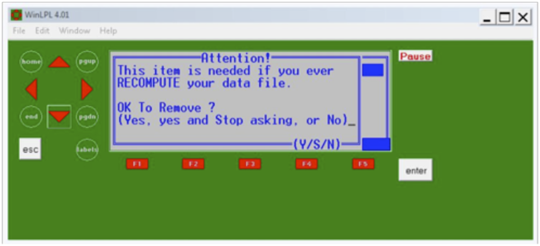
If you have all variables needed to recompute, you have several options:
- Create your own spreadsheet or other program with all of the appropriate equations. While you could learn the most from this exercise, it takes more effort.
- Load your old data files into the new LI6400SIM software and RECOMPUTE.
- ut and paste your old data into a Microsoft Excel spreadsheet generated on an LI-6400/XT with 6.x software installed (V6.x software can generate a spreadsheet-ready file with the equations necessary for recomputing).
We will leave door number 1 for you to open (after all, it’s all about the learning experience). Options 2 and 3 will be discussed in this tech tip.
Load your old data files into the new LI6400SIM software and RECOMPUTE
The software version used to generate the dataset you are working with is displayed in the first row of the header in the data file. In the new LI6400SIM software, clicking on File > Preferences opens a dialog where you can choose the instrument software version that generated the original data set.
The default installation directory for the new LI6400SIM software is C:\Program Files\LI-6400_Apps. Move the data you want to recompute into the User folder under the appropriate FileSys_…. directory. There are FileSys directories for software versions 3.x, 4.x, 5.x, 6.0, 6.1 and 6.2.
After you have loaded your old data files into the New LI6400SIM software you can recompute following the instructions in Chapter 13 of the instruction manual, Using The LI-6400/LI-6400XT Portable Photosynthesis System (version 6.2 software).
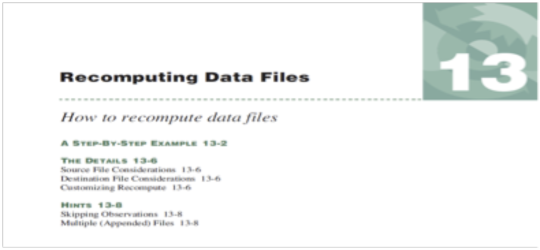
Use Microsoft Excel to RECOMPUTE older data sets
OPEN 6.X software has the option of exporting Microsoft Excel worksheets directly. This is significant because the exported data sheets now include the embedded equations for computing user variables.
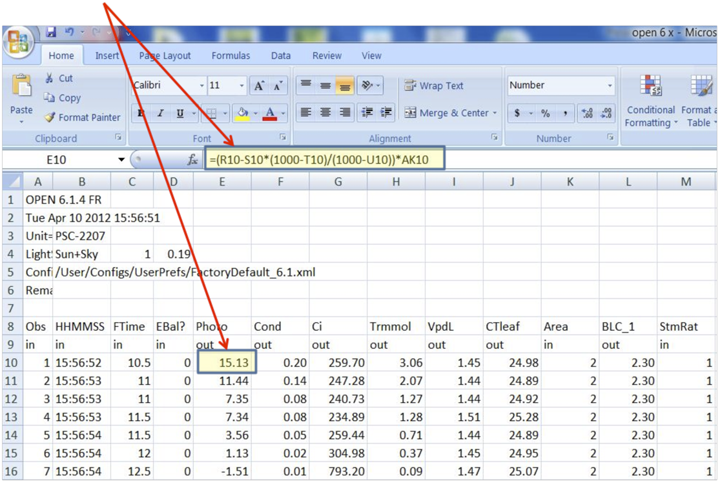
The spreadsheet can also be used for recomputing old data files. Simply cut the measured data from the original spreadsheet and paste into a spreadsheet with the embedded equations for computing user variables.
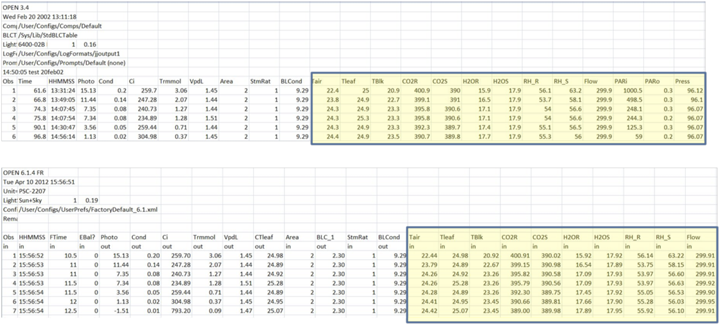
In the Excel spreadsheet files generated directly in the LI-6400/XT, variables labeled “in” are input variables. Variables labeled “out” are output variables that are computed from the input variables. In the graphic below, Photosynthesis in column E is computed with an equation that includes CO2R and CO2S, which happen to fall in columns R and S. If measured variables (labeled “in” in row 9 of the spreadsheet) are modified, then associated computed variables (labeled “out” in row 9 of the spreadsheet) will change.
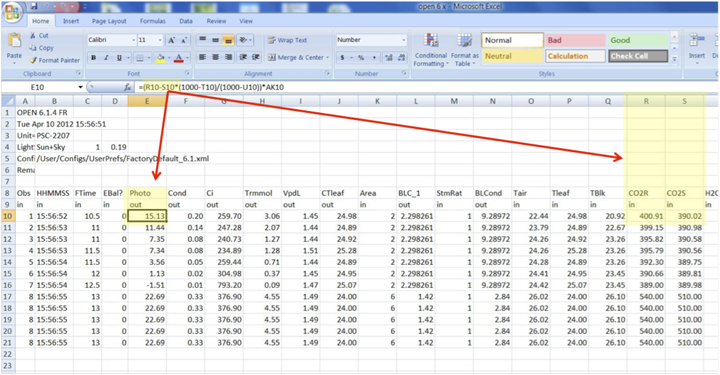
It is important to note that BLCond (column N in the spreadsheet) is an output variable, and that previous versions of the software did not log the essential input variables to recompute BLCond (BLCslope and BLCoffst in columns AE and AF here). You have two options: 1) either determine the appropriate values of BLCslope and BLCoffst for your configuration (use the appropriate configuration for your chamber and plant material and the fan speed used for the original measurements and read the values in 6.2 software), or 2) determine the correct value for BLCond and paste it into the spreadsheet. Note that the correct value for BLCond changes with chamber configuration, fan speed, stomatal ratio and leaf area.
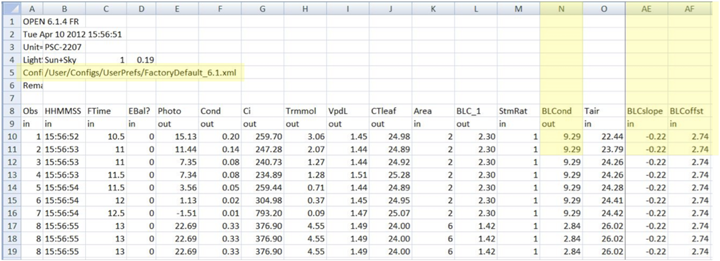
In addition to providing a facility for recomputing data the new spreadsheet with embedded equations can be used as a tool to evaluate alternative scenarios. For example, you could test how sensitive measurements are to the stomatal ratio. Does sensitivity change with decreasing transpiration rates? How about small errors in leaf temperature measurement? Imagine the possibilities.

